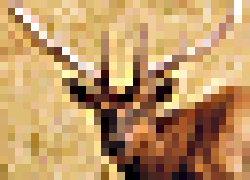The Computational Metaphor
The least-noticed trends are usually the most subversive ones. First on my list for an undetected upheaval is our collective journey toward the belief that the universe is a computer.
Already the following views are widespread: thinking is a type of computation, DNA is software, evolution is an algorithmic process. If we keep going we will quietly arrive at the notion that all materials and all processes are actually forms of computation. Our final destination is a view that the atoms of universe are fundamentally intangible bits. As the legendary physicist John Wheeler sums up the idea: “Its are bits.”
I first became aware of this increasingly commonly held (but not yet articulated) trend at the first Artificial Life Conference in 1987, where biological reproduction and evolution were described by researchers in wholly computer-science terms. The surprise wasn’t that such organic things could be given mathematical notations, because scientists have been doing that for hundreds of years. The surprise was that biological things could be simulated by computers so well. Well enough that such simulations displayed unexpected biological properties themselves. From this work sprung such fashionable patterns as cellular automata, fractals, and genetic algorithms.
The next step in this trend was to jettison the computer matrix and reimagine biological processes simply in terms of computer logic. But to do this, first computation had to be stripped from computers as well. Starting with the pioneering work of Van Neumann and Turing, a number of mathematicians concluded that the essential process of computing was so elementary and powerful that it could be understood to happen in all kinds of systems. Or, in other words, the notion of computation was broadened so wide that almost any process or thing could be described in computational terms. Including galaxies, molecules, mathematics, emotions, rain forests, and genes.

Is this embrace just a trick of language? Yes, but that is the unseen revolution. We are compiling a vocabulary and a syntax that is able to describe in a single language all kinds of phenomenon that have escaped a common language until now. It is a new universal metaphor. It has more juice in it than previous metaphors: Freud’s dream state, Darwin’s variety, Marx’s progress, or the Age of Aquarius. And it has more power than anything else in science at the moment. In fact the computational metaphor may eclipse mathematics as a form of universal notation.
This quickening of the new metaphor was made crystal clear recently in the work of mathematicians and physics who have been dreaming up the next great thing after silicon chips: quantum computers. Quantum computers lie at the convergence of two “impossible” fields, the world of the impossibly small (quantum states), and the world of the impossibly ghostly (bits). Things get strange here very fast, but one thing is strangest of all. In the effort to create mathematical theories of how matter works at levels way below subatomic particles, and in the effort to actually build computers that operate in this realm, some scientists have found that using the language of bits best explains the behavior of matter. Their conclusion: Its are bits. Young Einsteins such as mathematician/theoretical physicist David Deutsch are now in the very beginnings of a long process of redescribing all of physics in terms of computer theory. Should they succeed, we would see the material universe and all that it holds as a form of computation.
There will be many people who will resist this idea fiercely, for many good reasons. They will point out that the universe isn’t really a computer, only that it may act as if it is one. But once the metaphor of computation infiltrates physics and biology deeply, there is no difference between those two statements. It’s the metaphor that wins.
And as far as I can tell the computational metaphor is already halfway to winning.
(This was first published in the Whole Earth Review, Winter, 1998)


